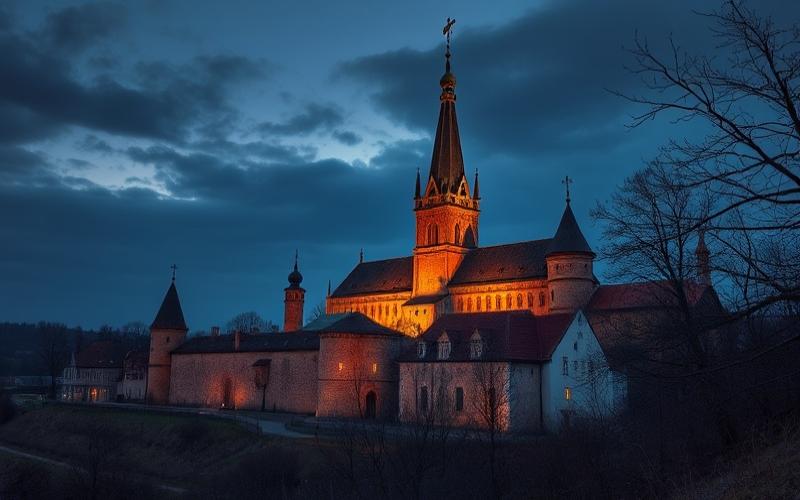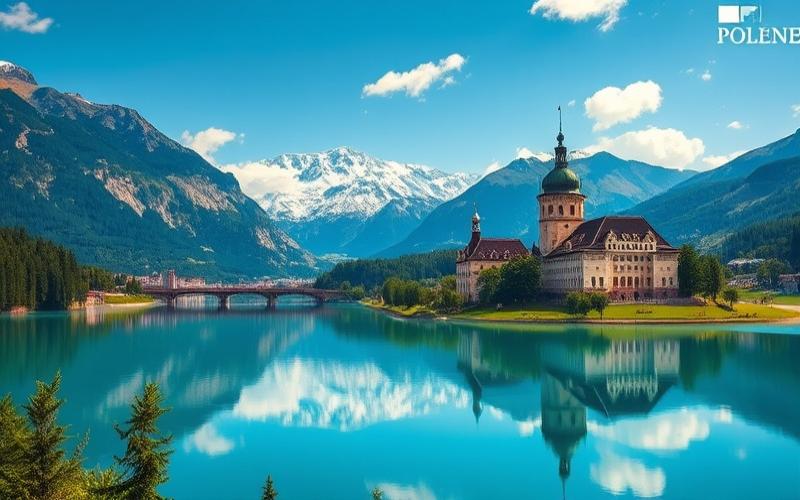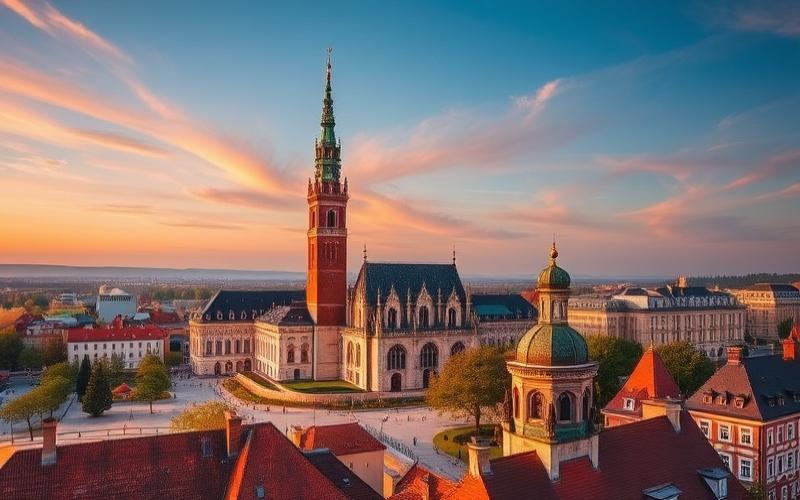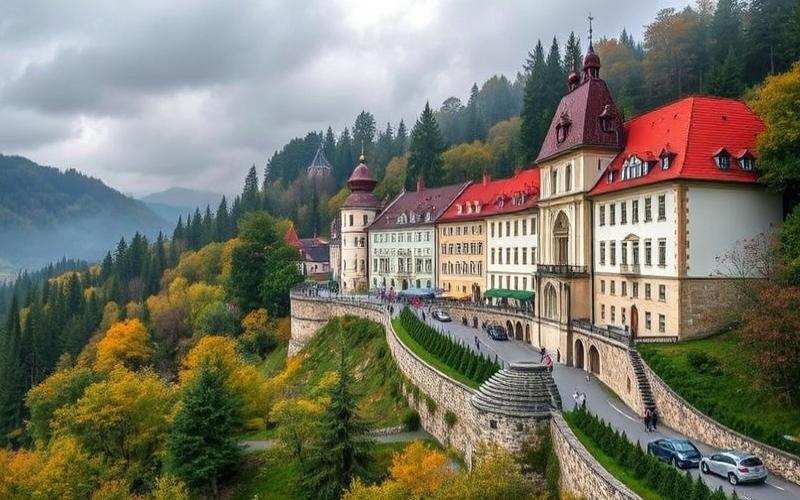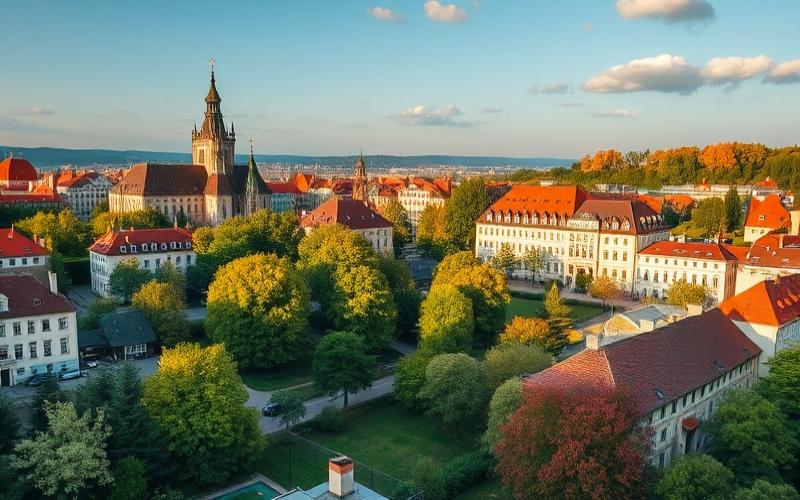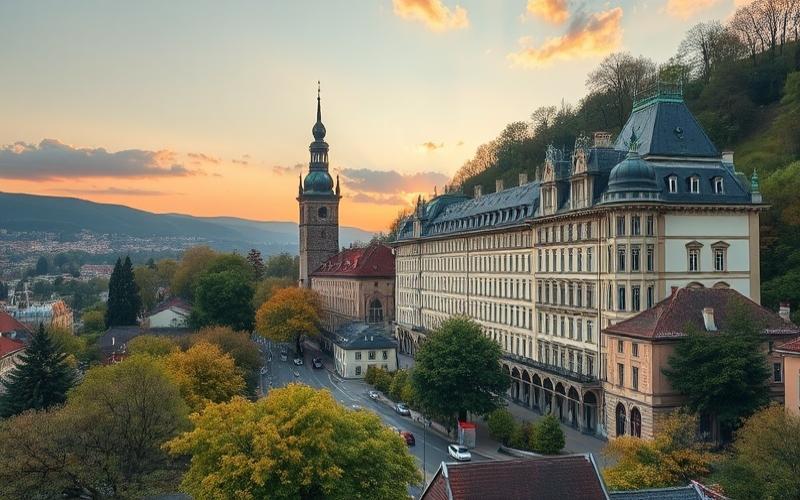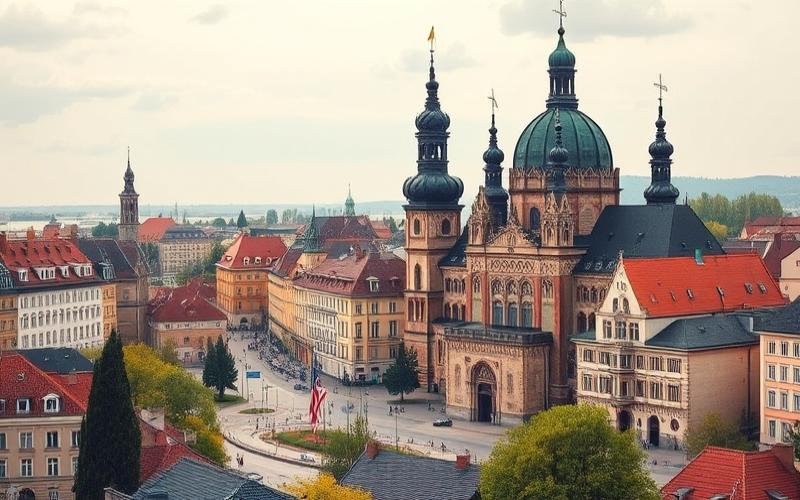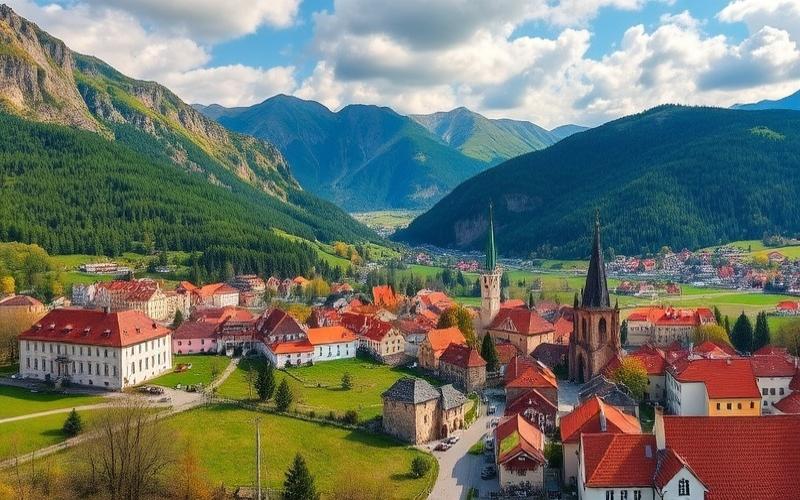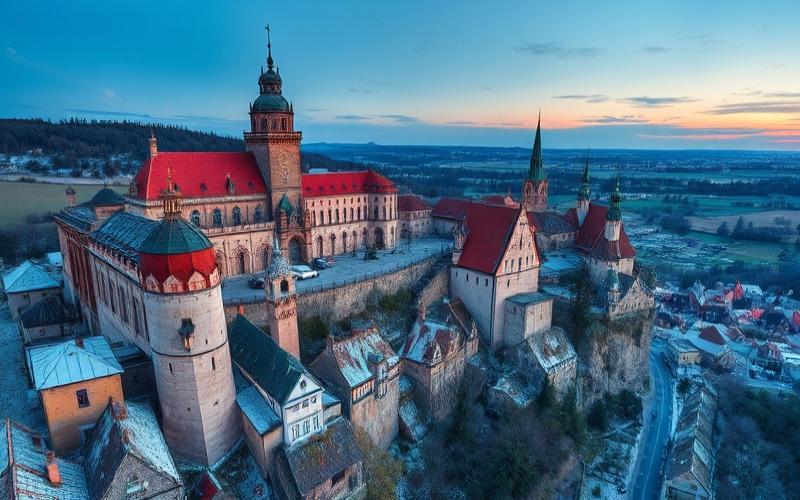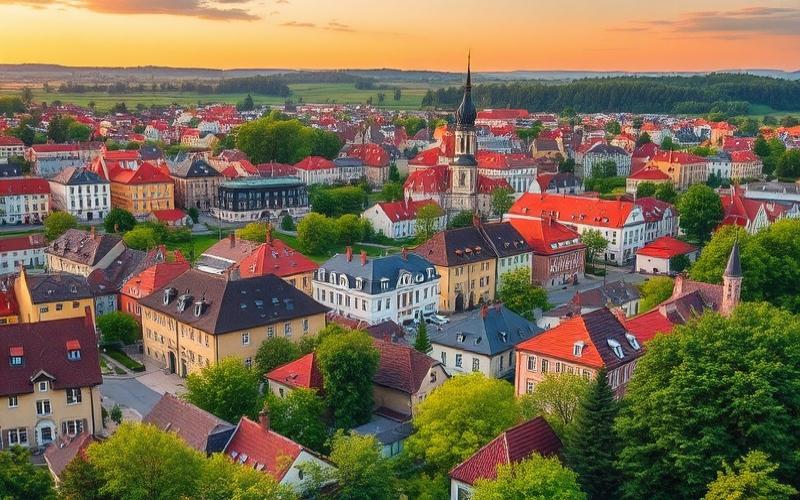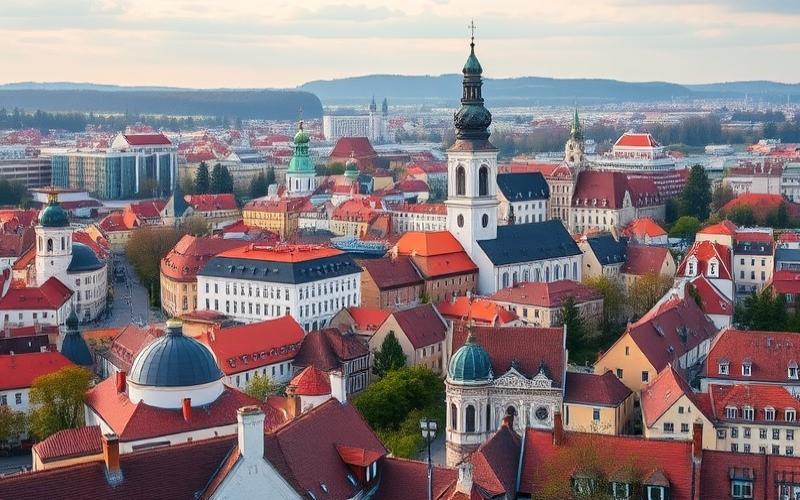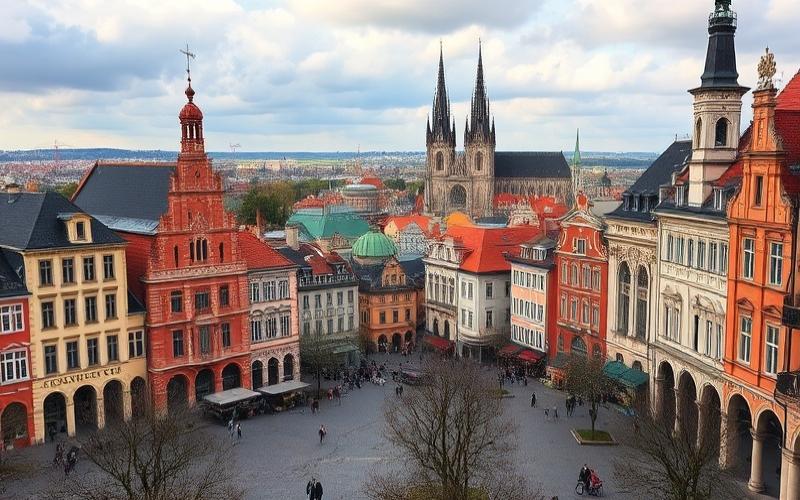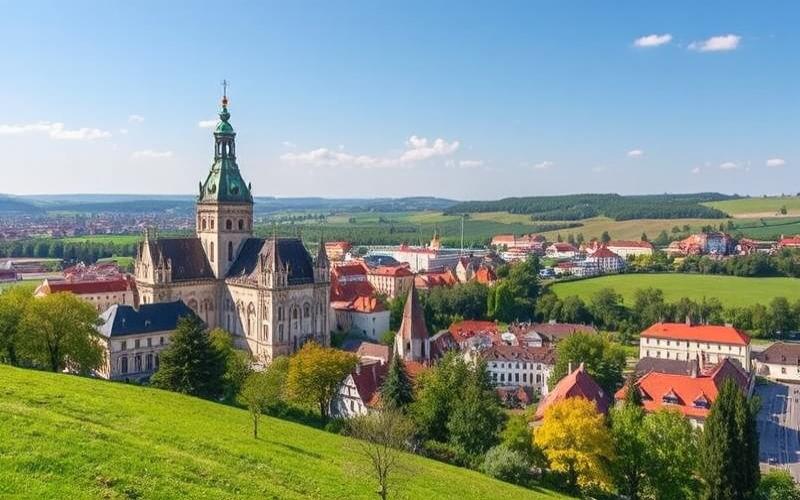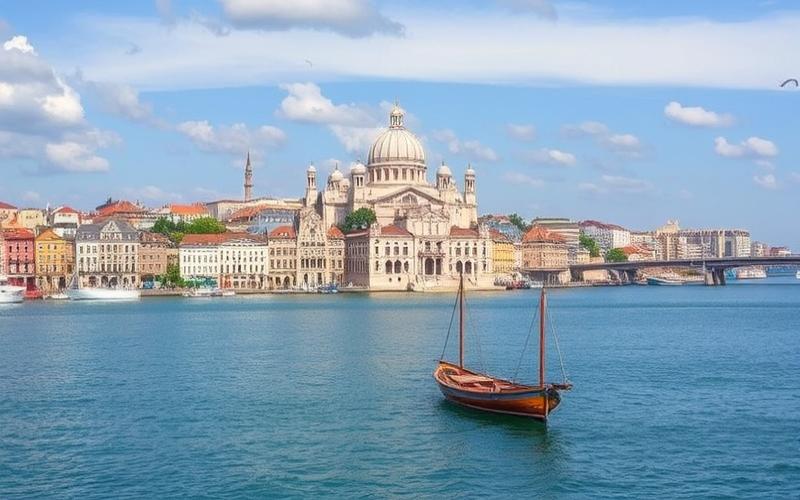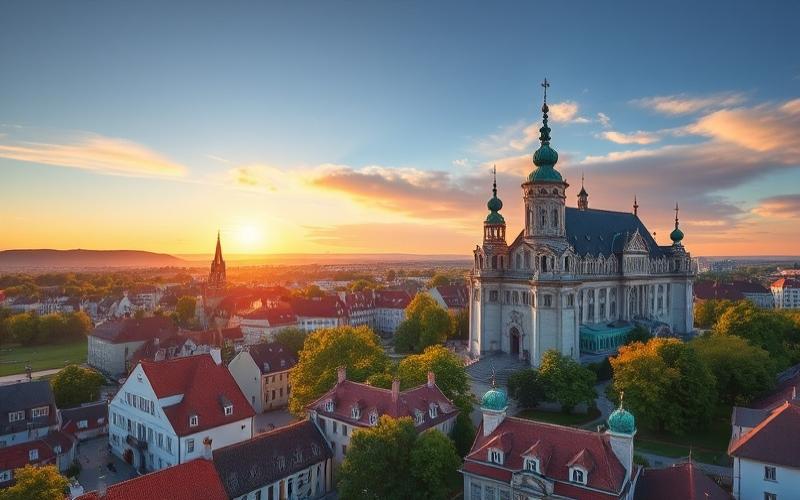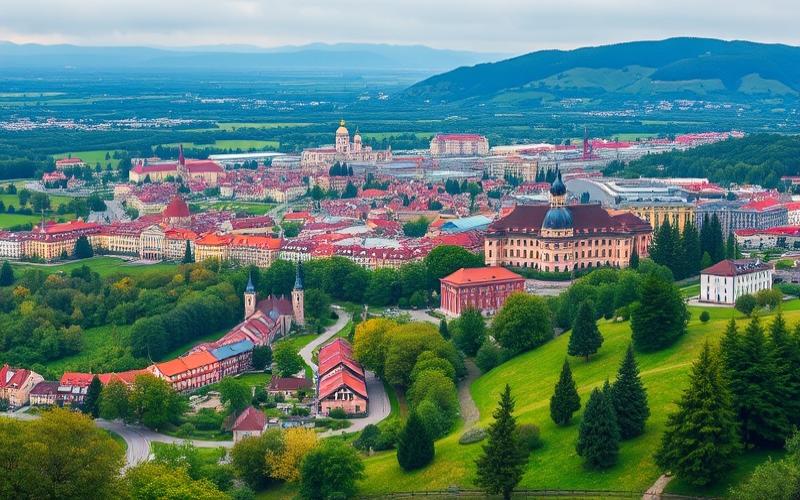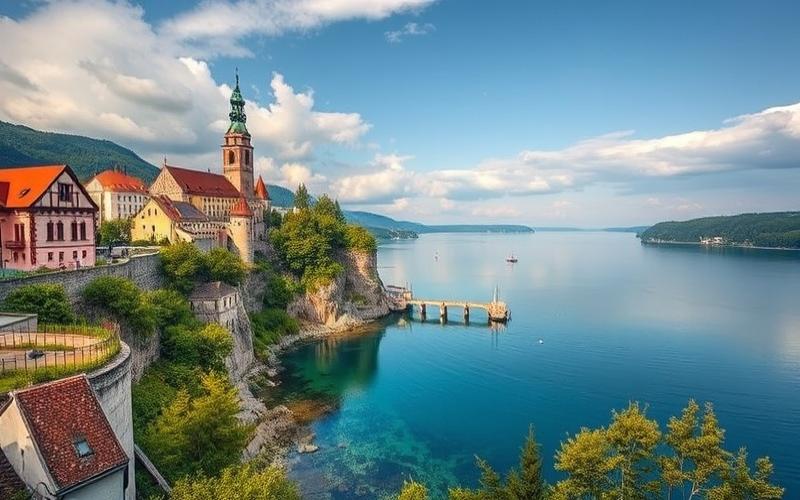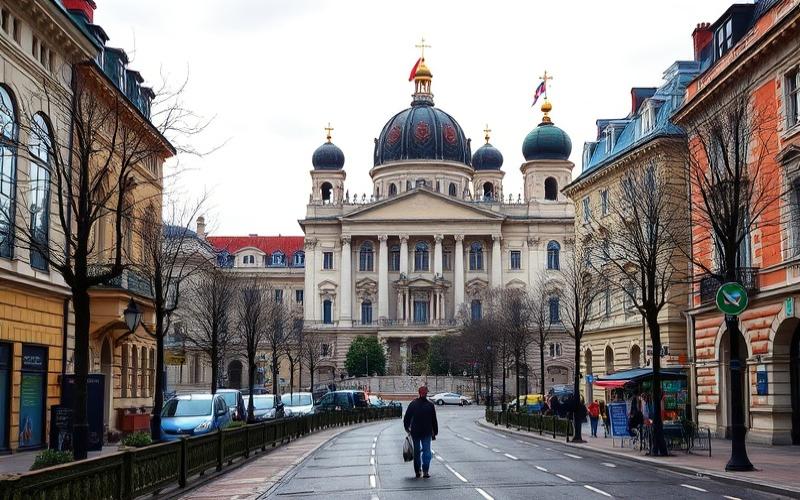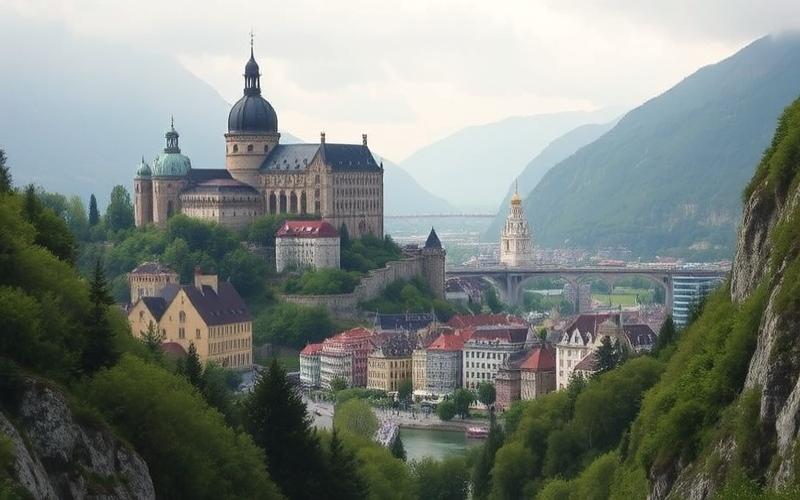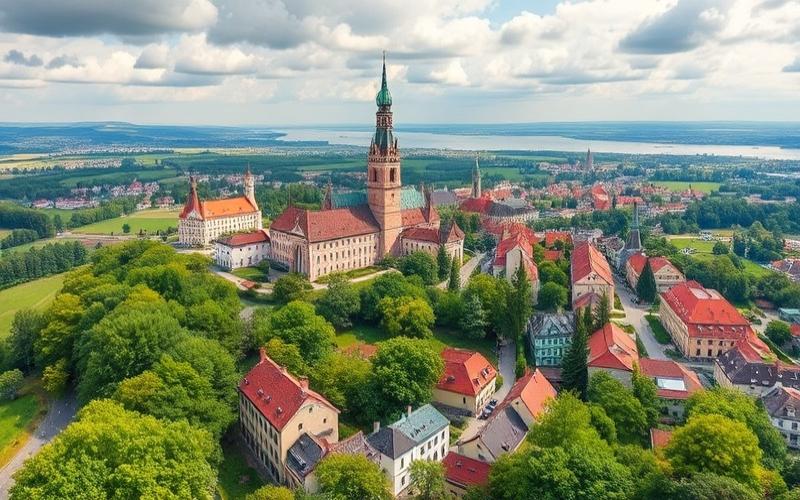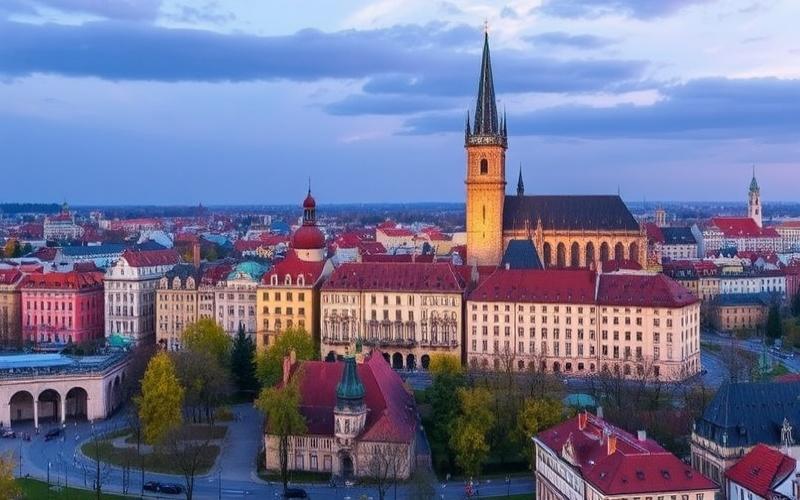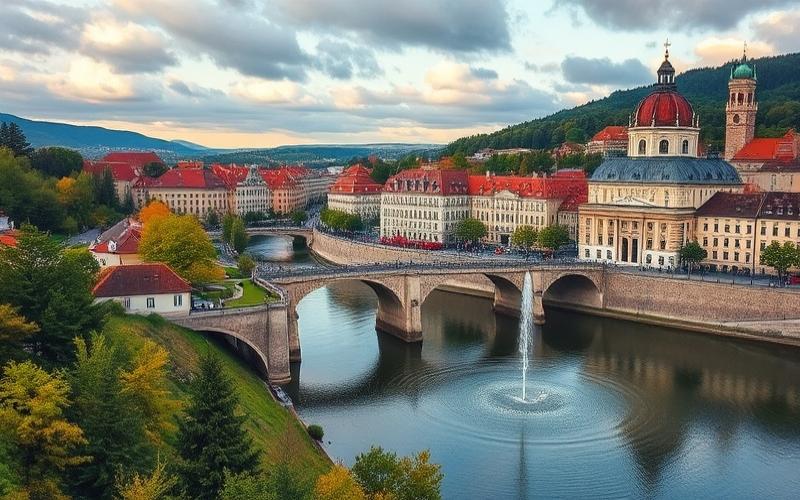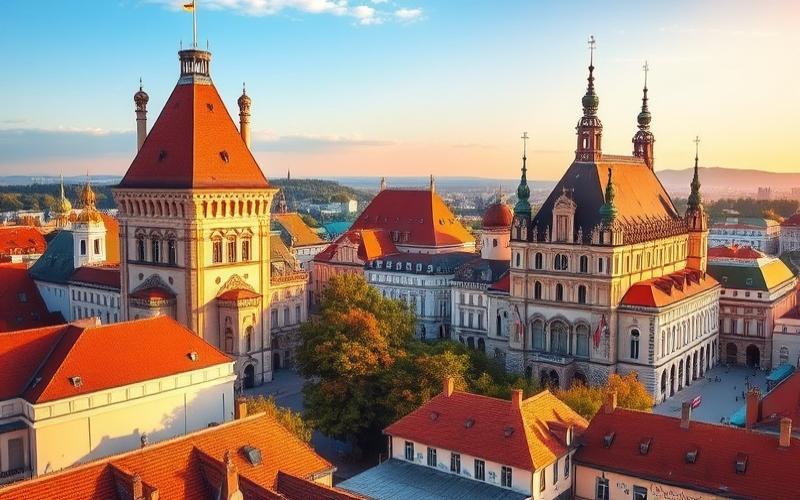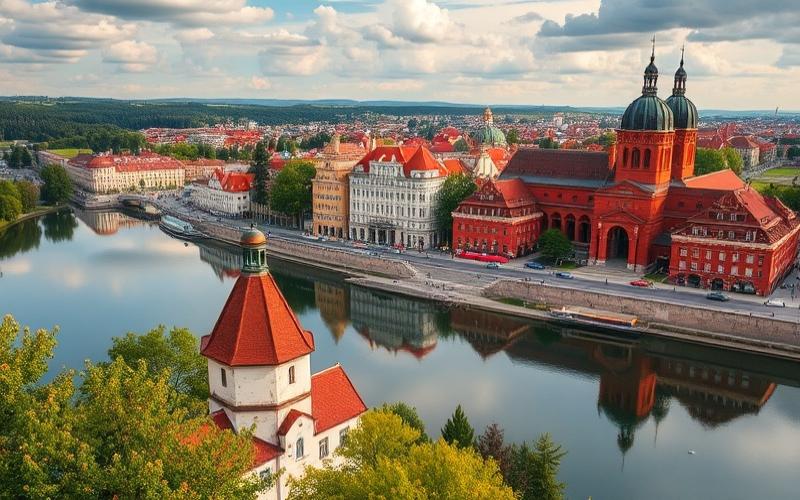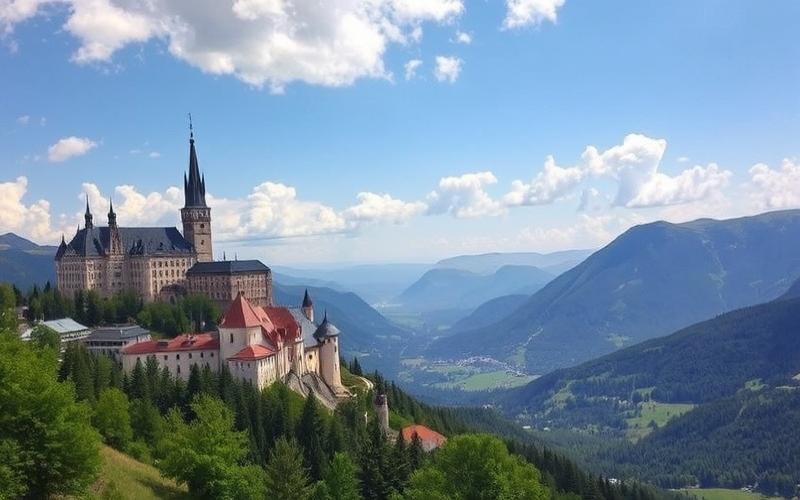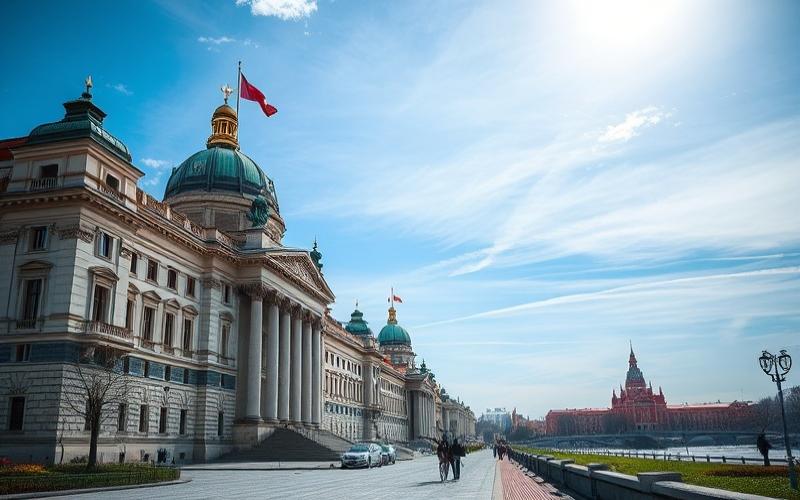
 Published on and written by Cyril Jarnias
Published on and written by Cyril Jarnias
Airbnb vs Long-Term Rentals in Poland: Which Option is More Profitable?
In Poland’s constantly evolving real estate landscape, the crucial question for many property owners and investors is profitability: is it better to choose Airbnb rentals or opt for the security of long-term leases?
With significant variations in tourist and residential demand from city to city, our study closely examines the yield differences these two options offer in Krakow, Warsaw, Gdańsk, and other key urban centers in Poland.
Armed with recent data and sharp analysis, we invite you to explore our detailed comparison to discover which strategy maximizes financial gains in the country’s current economic context.
Good to Know:
Yields can vary significantly depending on the property’s exact location, size, and condition. A case-by-case analysis is always recommended.
Comparison of Airbnb and Long-Term Rental Yields by City in Poland
The most popular Polish cities for both Airbnb and long-term rentals are Warsaw, Krakow, Gdańsk, Wrocław, and Poznań. These cities attract foreign tourists as well as business travelers and students.
| City | Monthly Long-Term Rent (€) | Estimated Airbnb Income (€) | Occupancy Rate (%) | High vs Low Season |
| Warsaw | 800-1,200 | 1,500-2,000 | 60-85 | +30% in summer |
| Krakow | 700-1,100 | 1,200-1,800 | 55-80 | +25-35% during festivals |
| Gdańsk | ~900 | up to ~2,000 | up to 90 | Sharp increase July/August |
| Wrocław | ~750 | ~1,400 | ~70 | Peak during conferences |
| Poznań | ~700 | up to ~1,200 |
“The Polish market remains dynamic thanks to growing international tourism and the gradual return of remote work/digital nomadism”
“Major cities should maintain attractive Airbnb yields as long as there’s no strict legal framework”
Trends anticipated by several real estate experts:
- Gradual increase in administrative controls
- Maintained superior profitability for Airbnb in historic city centers
- Partial shift toward medium-term rentals (3-6 months) meeting new post-pandemic needs
Investing today therefore requires careful regulatory monitoring as well as precise analysis of the local tourism calendar.
To summarize:
Major urban centers still offer an attractive differential between short-term Airbnb-type rentals and traditional leases – though subject to strict compliance with rapidly evolving rules.
Good to Know:
In Warsaw, Airbnb yields are often higher, with average monthly revenues around 3800 PLN and occupancy rates reaching 75% during peak tourist season, while long-term rentals generate about 2500 PLN. In Krakow, Airbnb revenues approach 3500 PLN with marked seasonal variations, as rates drop to 55% off-season. Airbnb-related costs include cleaning and management, often unnecessary for long-term rentals. Regulations differ by city, with Warsaw imposing restrictions on Airbnb rental durations. Experts predict that Poland’s real estate market favors increasing Airbnb yields, though caution is advised due to potentially stricter regulations ahead.
Profitability Data Analysis for Each Major Polish City
| City | Annual Gross Airbnb Profitability | Annual Gross Long-Term Rental Profitability | Airbnb Occupancy Rate (%) | Average Annual Airbnb Income (€) | Real Estate Price (€/m², 2024-2025 trend) |
|---|---|---|---|---|---|
| Warsaw | 8-11% | 4-6% | 65 | 15,060 | ~3,800, stable to slight + |
| Krakow | 7-10% | 4-6% | ~60 | ~12,500 | ~3,600, moderate increase |
| Gdańsk | Up to 12%, summer season | 5-7% | ~55 off-season / >70 in summer | Up to 14,000 | ~3,700, strong coastal increase |
| Wrocław | 7-9% | 4-6% | ~58 | ~11,000 | ~3,500, + weak acceleration |
Profitability Comparison
- Short-term Airbnb rentals consistently offer higher annual gross profitability than long-term rentals across all major Polish cities. In Warsaw and Gdańsk particularly, the yield gap can double for the same property.
- The average Airbnb occupancy rate ranges between 55% and over 70% depending on the city and especially the tourist season.
Polish Real Estate Market Trends (2024-2025)
- Moderate to marked increase in real estate prices in city centers (+2 to +8%), particularly on the Baltic coast (Gdańsk).
- Growing attractiveness of major cities for foreign tourists continues to fuel seasonal rental demand.
Influence of Tourist Seasons
- Coastal resorts like Gdańsk see profitability surge strongly during summer: occupancy rates above 80%, daily rates significantly higher.
- In Krakow or Warsaw, peaks occur during cultural events or summer; off-season income decreases but remains higher than the long-term model.
Local Regulations: Impact on Each Rental Type
Airbnb:
- Several Polish municipalities are considering or already implementing annual maximum night quotas to limit impact on traditional residential supply.
- Some condominiums statutorily prohibit short-term rentals; mandatory declaration to tax authorities.
Long-Term Rentals:
- Less subject to administrative restrictions. Standard contracts (renewable annual leases).
Good to Know:
The rapidly evolving local regulatory framework requires every investor to verify before each project.
Concrete Examples – Case Studies
1. Warsaw
- Downtown studio purchased for €120k
- Long-term rental: Net monthly rent €600 → Gross profitability ≈ 6%
- Airbnb rental: Estimated net annual income €15,060 → Gross profitability ≈ 12%
- Regulatory impact: Increased tax risk but regulations still flexible if declaration complied with
2. Gdańsk
- Family apartment near beach purchased for €150k
- Long-term rental: Net monthly rent €700 → Gross profitability ≈ 5.6%
- Seasonal Airbnb rental summer only (90 nights): Average nightly rate €180 → Gross summer income ≈ €16,200
Annual profitability boosted by “seasonal” effect, but strong dependence on tourism calendar
Key Points Summarized as List
Main Advantages of Airbnb Model:
- Higher yield especially in tourist areas
- Flexibility to use property outside rented periods
- Potentially advantageous taxation with LMNP/micro-BIC status
Main Advantages of Long-Term Rental:
- Guaranteed tenant stability (>95%)
- Less subject to local regulatory changes
- Simplified management and reduced expenses
Good to Know:
Analyzing profitability of Airbnb and long-term rentals in major Polish cities like Warsaw, Krakow, and Wroclaw reveals that Warsaw shows average annual gross profitability of 8% for Airbnb versus 5% for long-term rentals, while Krakow displays rates of 9% and 6% respectively. Constantly rising real estate prices directly impact profit margins, and seasonal peaks significantly influence Airbnb profitability, with notable increases during summer and year-end holidays. Local regulations, often strict, impose limitations on short-term rental days, affecting potential profitability. Comparative graphs and case studies such as Wroclaw’s example where marked seasonality attracts more Airbnb bookings illustrate these differences clearly.
Factors Influencing Short and Long-Term Rental Yields in Poland
The main factors influencing short and long-term rental yields in Poland are multiple and vary depending on the rental type (short-term like Airbnb or traditional long-term).
Factors Influencing Rental Yields in Poland:
| Factor | Short-Term Rental (Airbnb, seasonal) | Long-Term Rental |
|---|---|---|
| Tourist Demand | Very strong influence, especially in major cities like Warsaw, Krakow or Gdansk during seasonal peaks. | Weak influence; depends more on local population and students. |
| Seasonality | High yield during summer, school holidays and local events; marked fluctuations off-season. | More stable annual income; little seasonal impact. |
| Local Regulations | Growing restrictions on Airbnb: mandatory registration after 90 days/year to combat tourist housing shortage; strengthened safety standards; specific taxation. | Stable legal framework: no strict limitations on lease duration or distinction between furnished/unfitted housing; termination regulated by law with mandatory notice. |
| Infrastructure & Amenities | Proximity to tourist attractions, public transport, restaurants —> strong positive impact on occupancy and price/night. | Proximity to schools/universities, employment/industrial zones preferred by local families/students/employees. |
| National Economic Situation | Economic fluctuations (inflation, purchasing power) affect international/domestic tourism short-term —> possible Airbnb occupancy rate/nightly price volatility depending on national/European economic climate. | More gradual impact: rise/fall in unemployment or wages influences rental capacity but less abruptly than short-term. |
| Consumer Preferences | Recent trend favoring independent accommodations with kitchen/balcony/high-speed Wi-Fi since COVID-19; increased importance of customer reviews. | Often seek contract stability/affordable price/flexible or long duration; growing interest in modern/furnished apartments among young professionals/expatriates. |
Key Differences Between Airbnb/Short-Term and Long-Term Rental Markets
- Profitability:
- Short-term: Higher gross potential in urban/tourist centers during peak periods; variable monthly income depending on occupancy.
- Long-term: Generally lower profitability compared to short-term high-season peaks but superior annual stability.
- Management:
- Short-term: Time-consuming management (frequent key handovers), increased maintenance, managing reviews/reservations/dynamic scheduling.
- Long-term: Simplified management once lease signed; less frequent tenant interactions.
- Recent Regulatory Impact
- In 2024-2025: obligation in Poland for short-term rentals exceeding 90 days/year to register with local authorities; increased control aiming to reduce real estate speculation linked to tourism.
- For long-term rentals: relatively stable legislative framework for several years.
Synthetic List of Important Points:
- Major Polish cities still benefit strongly from international tourism although some limitations are appearing to regulate Airbnb.
- Maximum profitability occurs when property is located near city center/major tourist sites/universities/recent technology hubs.
- Post-pandemic trends show reinforced appeal for autonomy/comfort/high-speed internet connectivity even for short stays.
- National economic climate mainly plays through indirect effects on purchasing power/mortgage rates/internal/external mobility.
To Remember:
Optimal profitability therefore largely depends on the initial strategic choice: maximizing short-term cash flow implies constant adaptation to traveler trends/local regulations while securing a long-term rental offers management peace of mind but often lower net yield.
Good to Know:
Rental yields in Poland are influenced by several key factors. Short-term, tourist demand in cities like Krakow and Warsaw boosts Airbnb revenues, though this profitability can be impacted by seasonality and strict local regulations on short-term rentals. In comparison, long-term rentals are less affected by these seasonal variations, offering a more stable income source. Local infrastructure and nearby amenities, such as transport and services, play a crucial role in property attractiveness. Additionally, Poland’s growing economic situation directly influences the real estate market, while evolving tenant preferences favoring short stays for Airbnb add a layer of complexity to property management. Recent data shows that even if Airbnb yields can exceed long-term rentals during high season, the latter require less daily management effort, highlighting notable differences in profitability and management.
Disclaimer: The information provided on this website is for informational purposes only and does not constitute financial, legal, or professional advice. We encourage you to consult qualified experts before making any investment, real estate, or expatriation decisions. Although we strive to maintain up-to-date and accurate information, we do not guarantee the completeness, accuracy, or timeliness of the proposed content. As investment and expatriation involve risks, we disclaim any liability for potential losses or damages arising from the use of this site. Your use of this site confirms your acceptance of these terms and your understanding of the associated risks.





